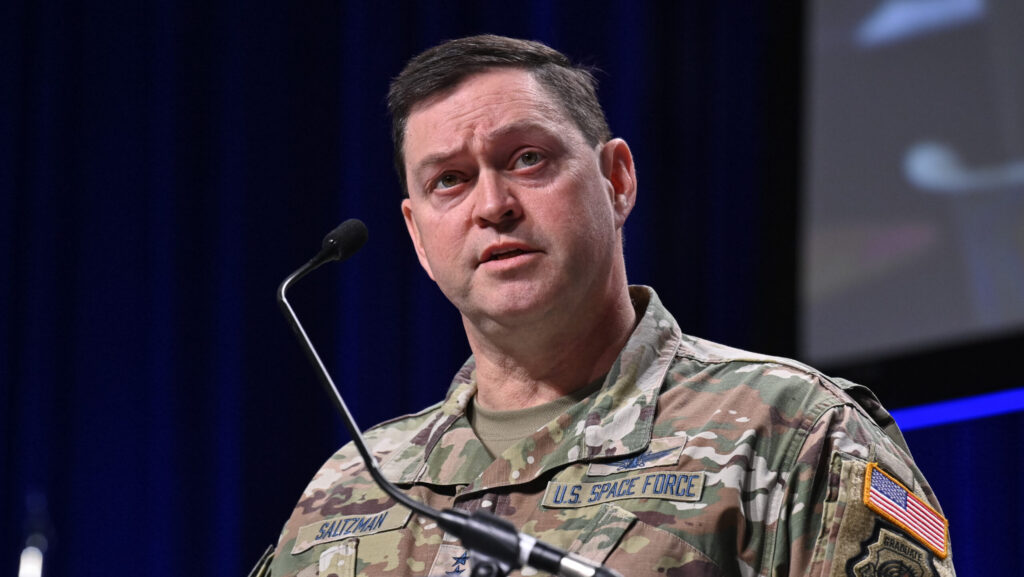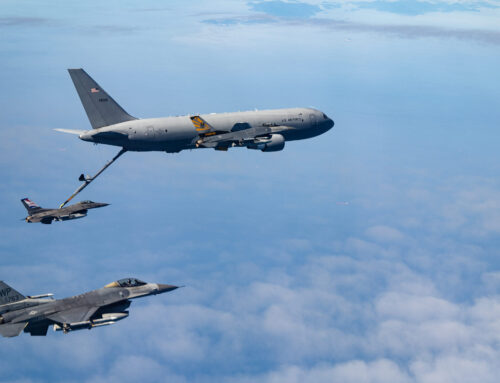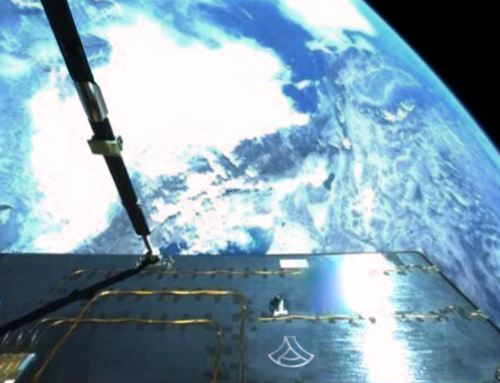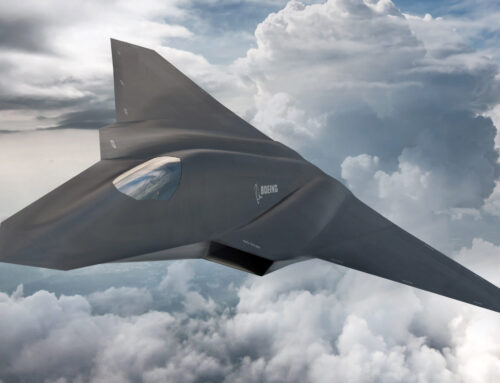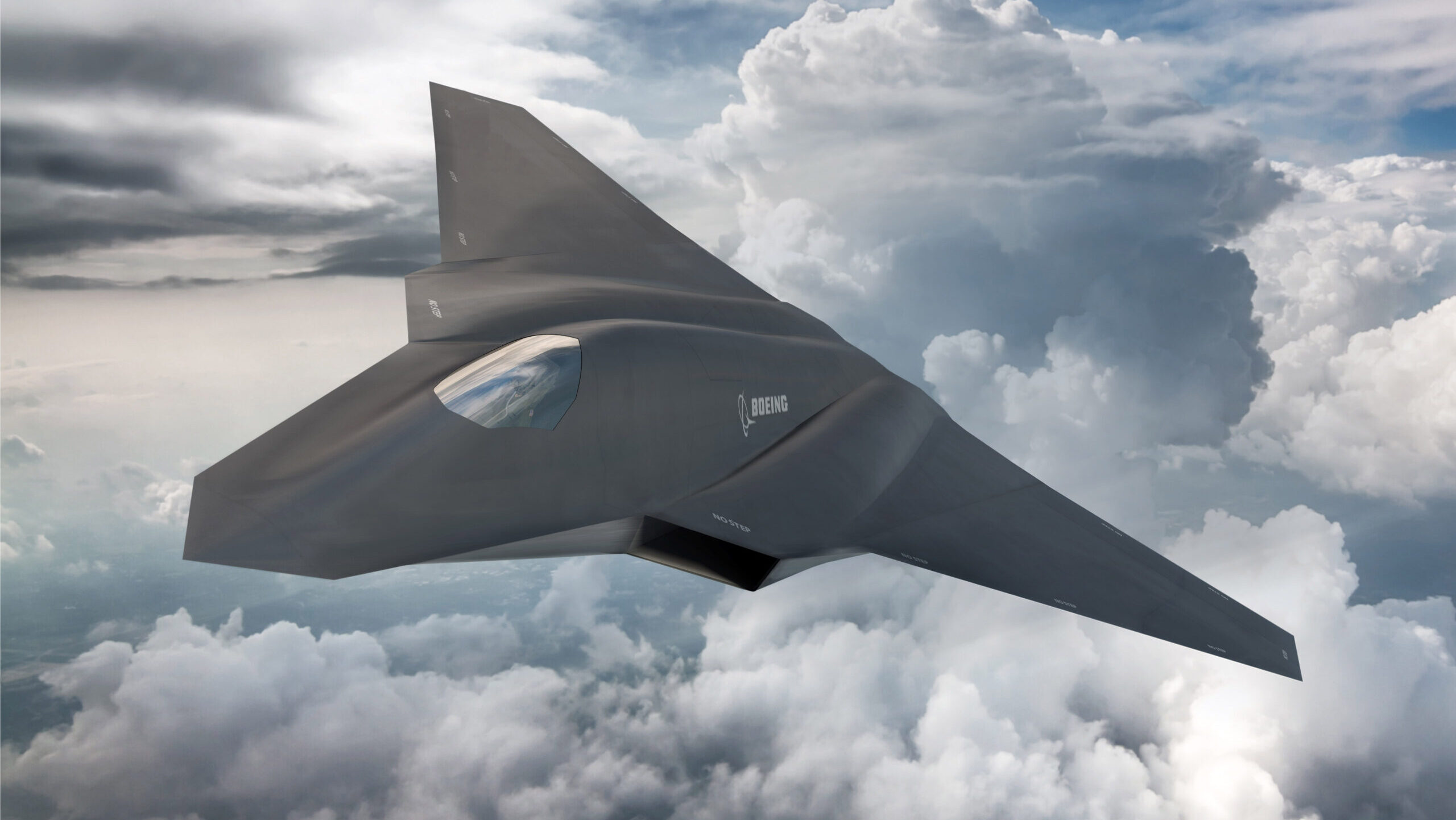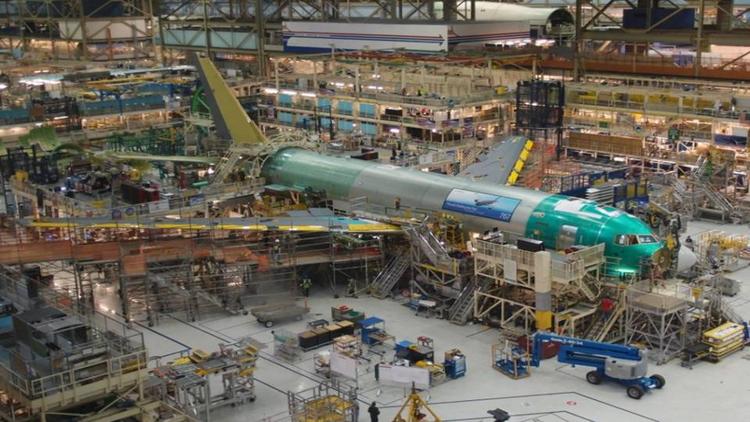Chief of Space Operations Gen. Chance Saltzman delivers a keynote address on the state of the U.S. Space Force during the Air and Space Forces Association 2024 Warfare Symposium in Aurora, Colo., Feb. 13, 2024. (U.S. Air Force photo by Eric Dietrich)
LONDON — Pillar II of the trilateral AUKUS security arrangement already hopes to boost development of AI, hypersonics and other cutting edge tech, but today a key American official suggested it should widen its scope further and aim much higher: to space.
Gen. Chance Saltzman, chief of operations for the US Space Force, told reporters at the Global Air Chief’s Conference today that he believes there is “room” within the US-UK-Australia agreement for his area of operations to be added to the list of the partnership’s tech dreams.
Discussions on the subject between the three partners have already taken place, but nothing definitive has been decided yet, according to Saltzman. (Pillar I, the main thrust of the partnership, refers to the US and UK working to provide Australia with nuclear-powered submarines.)
“We are at that stage of planning” around what we should include, he noted, but added that all three nations see a potential Pillar II space agreement “as a valuable tool.”
“If we can take advantage of it to foster additional space cooperation, we certainly want to” do that, explained Saltzman.
RELATED: Austin, AUKUS partners announce Pillar II plans: Maritime exercises, DIU challenges, industry forums
The interest in developing a space based Pillar II deal comes on the heels of the US, UK and Australia announcing a trilateral basing plan for the Deep Space Advanced Radar Capability in December 2023, designed to provide 24/7, all-weather capabilities to “increase the ability to detect, track, identify and characterize objects in deep space,” according to the Space Force.
Pillar II already includes a broad “innovation” category that covers learning from commercially available technology, potentially of significance because of how space assets have heavily shaped the war in Ukraine.
Industry has already expressed interest in contributing to AUKUS related space initiatives. As Breaking Defense previously reported, Australian startup Quasar Satellite Technologies has pioneered a new way of keeping tabs on space objects using a multi-channel, phased-array antenna. The technology has already been discussed “in the context of AUKUS” with the Australian government, CEO Phil Ridley said last year.
In January, the Lowry Institute, an Australian think tank, specifically called out the need for the space domain to be included in the AUKUS framework, noting, “Pillar II of AUKUS provides a pathway for the acceleration of shared space capabilities between the US, UK and Australia.”
It remains to be seen how ambitious the AUKUS partners intend to be or if, for example, they might push for joint procurement of space assets.
Elsewhere in his talk and outside the context of AUKUS, Saltzman discussed space capabilities that would of course be of interest to every member of AUKUS, including America’s ability to track China’s hypersonic missile threat. He said the Space Development Agency (SDA) is “well along” in developing a next-generation space-based missile warning system, capable of tracking hypersonic weapons.
He noted that over “this past year” around “a couple dozen” satellites were placed on orbit, as part of SDA’s tech demonstrator effort, known as Tranche 0, aligned to the missile warning/tracking effort. SDA in February launched the final four of the eight Tranche 0 missile warning/tracking satellites, and is planning to have a follow-on set of 32 birds capable of operations on a regional basis on orbit by 2025.
“We’re still early in the program,” he said. “We’re still collecting the data to make sure that the sensors work with the ground infrastructure, as value added, but we’re well on our way in establishing the constellation that will be able to detect that [enemy hypersonic weapons].”
Theresa Hitchens contributed to this report.


